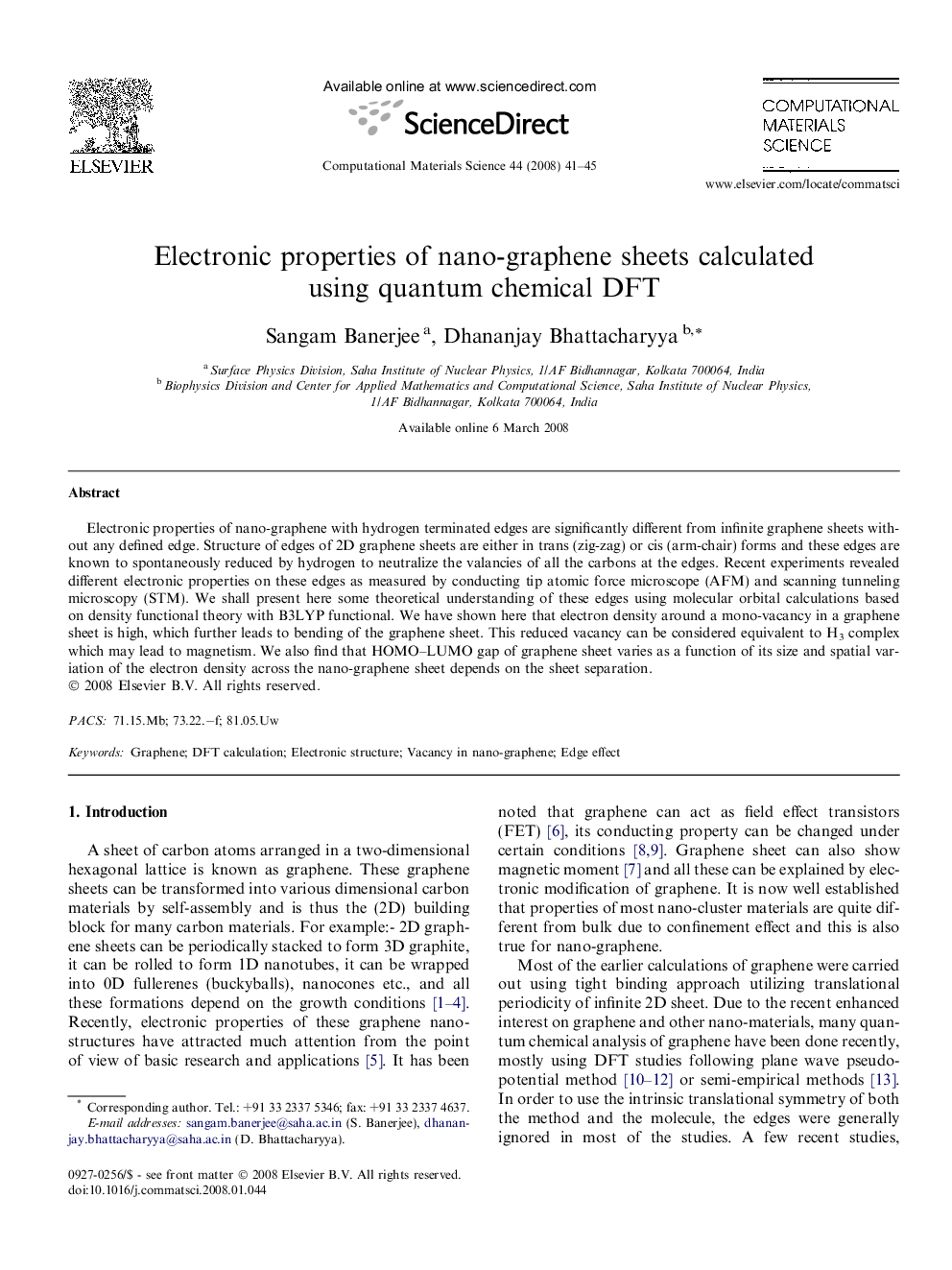| Article ID | Journal | Published Year | Pages | File Type |
|---|---|---|---|---|
| 10644528 | Computational Materials Science | 2008 | 5 Pages |
Abstract
Electronic properties of nano-graphene with hydrogen terminated edges are significantly different from infinite graphene sheets without any defined edge. Structure of edges of 2D graphene sheets are either in trans (zig-zag) or cis (arm-chair) forms and these edges are known to spontaneously reduced by hydrogen to neutralize the valancies of all the carbons at the edges. Recent experiments revealed different electronic properties on these edges as measured by conducting tip atomic force microscope (AFM) and scanning tunneling microscopy (STM). We shall present here some theoretical understanding of these edges using molecular orbital calculations based on density functional theory with B3LYP functional. We have shown here that electron density around a mono-vacancy in a graphene sheet is high, which further leads to bending of the graphene sheet. This reduced vacancy can be considered equivalent to H3 complex which may lead to magnetism. We also find that HOMO-LUMO gap of graphene sheet varies as a function of its size and spatial variation of the electron density across the nano-graphene sheet depends on the sheet separation.
Related Topics
Physical Sciences and Engineering
Engineering
Computational Mechanics
Authors
Sangam Banerjee, Dhananjay Bhattacharyya,
